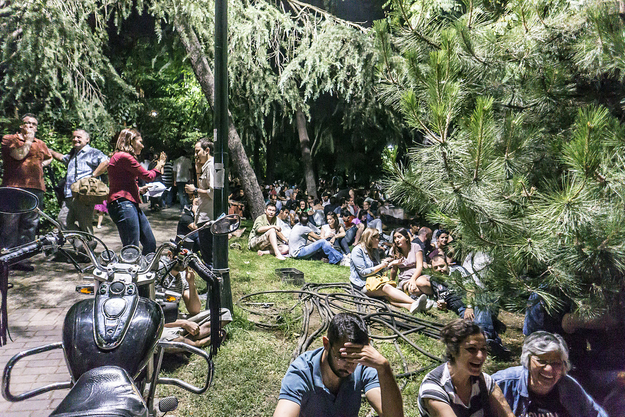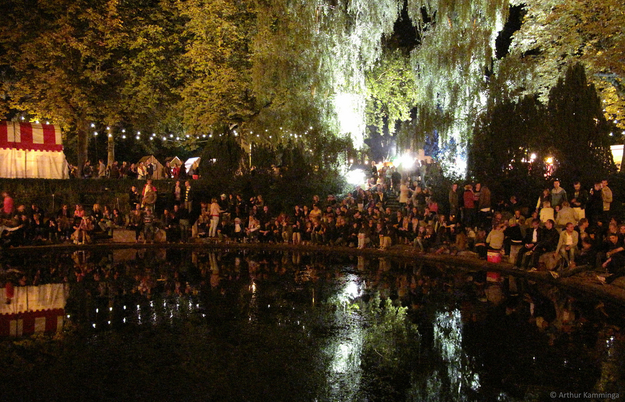‘City’ is there where it is not ‘Country’. The city and the country side are like black and white; without the one you can’t explain the other. They are related to each other as a Siamese twin which one of them has the hart and the other has the longs. Where the country provides the city with food, the city provides the country with a market, and so on. ‘City’ has a historical reputation as a symbol for capitalism, individualism, freedom and dreams. Where ‘Country’ is a place for rest, traditions and ‘the good and sober life’.
Where the village is a piece of city in ‘nature’ , the park is a piece of nature in ‘culture’, like ying and yang.
But parks are not automatically incorporated in cities. You have to choose for a park, it costs money to build, to keep it proper and off all, keep it free from city related things as highways, houses and big offices. In Dutch cities this will to have parks in the city is a result of different developments that set in around 1880. One of them was the ground that came free after breaking down the establishment ramparts. Another important development was the spirit of the time within the higher society to ‘elevate the people’, as a product of the enlightenment and the believe in the ‘Socially Engineered Society’. The city was during this time the place where industrialization and a growing poor working class went hand in hand. The higher society saw in this a degradation of norms and values, caused by the distance from the traditional way of living of the working class, that they supposed to have on the country side. Education, a proper household and ‘nature’ would up-grade the working class. Another problem within the cities were the diseases; parks would also bring more fresh air to the cities. But don’t think of the higher class as socialists. The main reason they ‘cared’ about the working class was that they had to live with them, and there diseases infected their selfs. As a result, many parks, like the Vondel Park in Amsterdam, were owned by a foundation or were private property (as many parks in Londen still are). In later times the parks were institutionalized by the government.
This brought me up to two questions.
Do we still need parks? And who should fight for the parks? Maybe it is not up to ‘the normal people’ to fight for the public space, but the upper class to keep the ‘ working class’ satisfied. Cause the poor, the owners of labour, and the rich, the owners of kapital, are just like ‘city’ and ‘country‘ depending on each other. A park can be seen as a free space, where working people can recreate and forget about work. Something everybody needs in a while.
We can think about parks as a waste of land, better builded up with offices and shopping malls as an economic impulse. But what we will do is creating overstressed citizens, surrounded by glass buildings, missing any link with nature. A settlement of nature to provide the feeling of ‘ being out of the city’ will do much better for the working ethos, and so for economics.
So, if you are a real capitalist, you better start to fight for the retain of parks and other public spaces!

